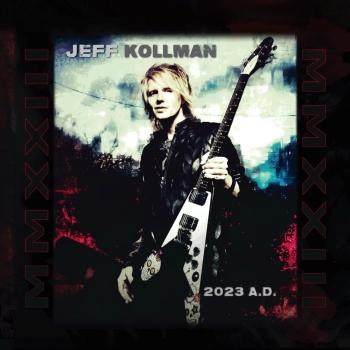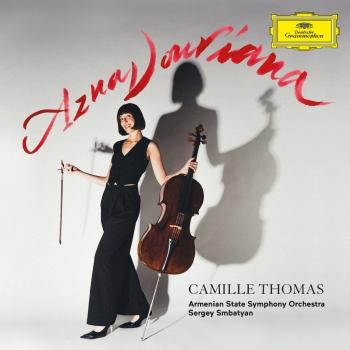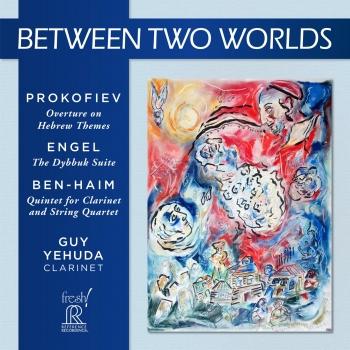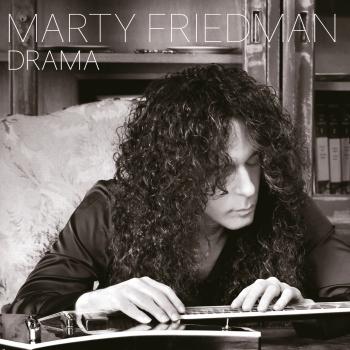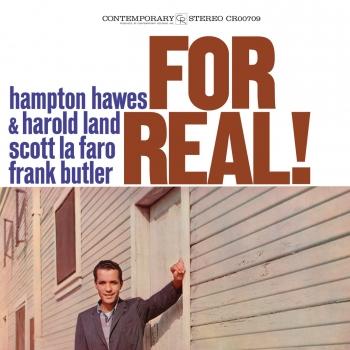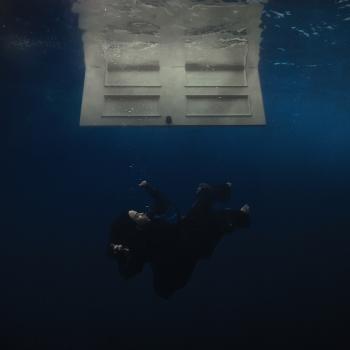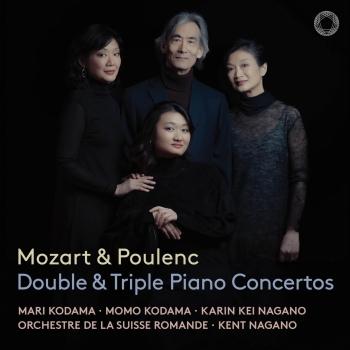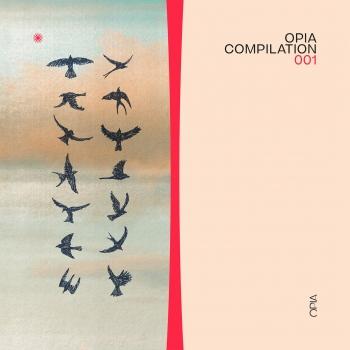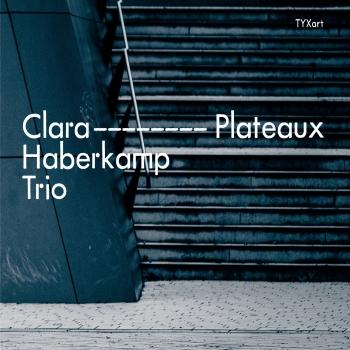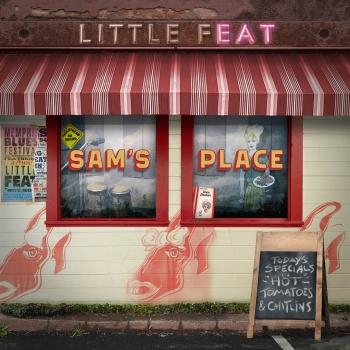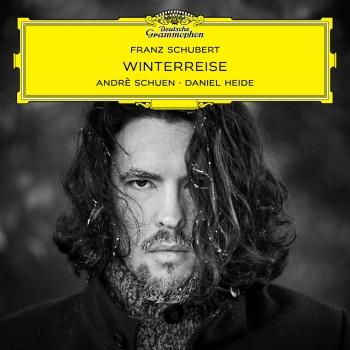
Hungarian Diary Teodoro Anzellotti & L'Instant Donné
Album info
Album-Release:
2014
HRA-Release:
07.02.2014
Label: Winter & Winter
Genre: Classical
Subgenre: Instrumental
Artist: Teodoro Anzellotti & L'Instant Donné
Composer: György Kurtág (1926), György Ligeti (1923-2006), Franz Liszt (1811-1886)
Album including Album cover
I`m sorry!
Dear HIGHRESAUDIO Visitor,
due to territorial constraints and also different releases dates in each country you currently can`t purchase this album. We are updating our release dates twice a week. So, please feel free to check from time-to-time, if the album is available for your country.
We suggest, that you bookmark the album and use our Short List function.
Thank you for your understanding and patience.
Yours sincerely, HIGHRESAUDIO
- György Kurtág (1926): Játékok, Vol. III
- 1Bogáncs00:23
- 2Sirató (Second Version)00:43
- 3Hempergös00:18
- Játékok, Vol. II
- 4Antifona fiszben00:40
- Franz Liszt (1811-1886): Bagatelle sans tonalité, S. 216 a
- 5Bagatelle sans tonalité, S. 216 a02:40
- György Kurtág (1926): Játékok, Vol. III
- 6Hommage a Borsody László (Harmonica)00:29
- 7Születésnapra Antal Dórának (Second Version)01:00
- 8Apokrif Himnusz00:42
- Játékok, Vol. V
- 9Fanfárok00:40
- György Ligeti (1923-2006): Musica ricercata (1951-53)
- 10I. Sostenuto - Misurato - Prestissimo02:12
- 11II. Mesto, rigido e cerimoniale03:22
- 12III. Allegro con spirito01:06
- 13IV. Tempo di valse. Poco vivace 'À l'orgue de Barbarie'01:51
- 14V. Rubato. Lamentoso03:49
- 15Vi. Allegro molto capriccioso00:49
- 16VII. Cantabile, molto legato04:07
- 17VIII. Vivace. Energico01:00
- 18IX. Adagio. Mesto - Allegro maestoso (Béla Bartók in memoriam)02:21
- 19X. Vivace. Capriccioso01:21
- 20XI. Andante misurato e tranquillo (Omaggio a Girolamo Frescobaldi)03:43
- György Kurtág (1926): Játékok, Vol. VI
- 21Szemtöl-Szembe (Demény János in memoriam)00:34
- 22Humble Regard sur Olivier Messiaen01:03
- Játékok, Vol. III
- 23Five-Finger Quarrel00:24
- ...C'erano due fiori ...a Francesca Camerana gentile
- 24...C'erano due fiori ...a Francesca Camerana gentile02:06
- Játékok, Vol. VI
- 25Vízözön-Szirénák, Waiting for Noa00:42
- Franz Liszt (1811-1886): Nuages gris, S. 199
- 26Nuages gris, S. 19903:05
- György Kurtág (1926): Játékok, Vol. VI
- 27Versetto, Temptavit Deus Abraham00:40
- 28Versetto, Dixit Dominus ad Noe, finis universe carnis venit (Dobszay Lászlónak)00:59
- 29Ligatura y04:03
- Franz Liszt (1811-1886): Resignazione, S. 187 a
- 30Resignazione, S. 187 a01:47
Info for Hungarian Diary
The new solo album by Teodoro Anzellotti with the title „Hungarian Diary“ presents György Kurtág's 'Games' ('Játékok') — inspired by the spontaneity and great ease of playing children — additionally, Anzellotti selects works by György Ligeti and Franz Liszt.
Teodoro Anzellotti is one of the leading soloists and most important accordion players in the contemporary music scene. In the 20th and 21st century he leads the development of this instrument with his high artistic skills into the future. His musicality, his virtuosity, and also his almost unlimited pleasure of discovery of new sounds – which didn't exist before him – inspired composers like Luciano Berio, Heinz Holliger, Mauricio Kagel, Manuel Hidalgo, Fabio Nieder, Matthias Pintscher, Wolfgang Rihm, Salvatore Sciarrino, Dieter Schnebel, Jörg Widmann and/or Hans Zender to create completely new works for Teodoro Anzellotti's world of accordion sounds. Also the most important Hungarian New Music composer György Kurtág heard him play and it sparked his imagination to adapt 'Játékok' for accordion. He asked Anzellotti if he would be interested in performing parts of 'Játékok' with his accordion [since 1973 Kurtág works on this continuing series of pieces called 'Játékok' ('Games')]. Then they immediately start arranging pieces of 'Játékok' for accordion.
Thus the idea was born of creating a new album by Teodoro Anzellotti with the title »Hungarian Diary«. In addition to György Kurtág's 'Games' ('Játékok') — inspired by the spontaneity and great ease of playing children — Anzellotti selects works by György Ligeti and also Franz Liszt. Anzellotti's decision was made for 'Musica ricercata', composed by Ligeti in Budepest during the years 1951 through 1953, before he left the communistic Hungary to live in the Western world. 'Musica ricercata' is a highly radical oeuvre, an experiment of minimalistic sound- and rhythm structures, in which — according to Teodoro Anzellotti — the color of the tones is not the most important criterion. The 11 pieces are conceptualised in such a manner that piece by piece the amount of tones increase in the way of the chromatic scale. At the beginning ('Sostenuto - Misurato - Prestissimo') exists only one note, at the end of the part resounds the second tone. In the second piece three tones are used, and in the third part four ... up to all twelve tones in the eleventh piece. Shortly after the version for piano, Ligeti arranged six of the movements of 'Musica ricercata' for wind quintet under the title 'Six Bagatelles for Wind Quintet'.
The inclusion of the works 'Bagatelle sans tonalité', 'Nuages gris' and 'Resignazione' by Franz Liszt — in Hungarian language Liszt Ferencz, as he calls himself — seems a surprise. Liszt composed these compositions during the last ten years of his life, after his glorious time as touring piano virtuoso. These works penetrate into the essence of music. Liszt wrote 'Nuages gris' 1881, in the late romantic time period its anarchical simplicity must have been as shocking as the effect of Paul Klee's painting of an angel ('Angelus Novus') for Walter Benjamin: 'A Klee painting named 'Angelus Novus' shows an angel looking as though he is about to move away from something he is fixedly contemplating. His eyes are staring, his mouth is open, his wings are spread. This is how one pictures the angel of history. His face is turned toward the past. Where we perceive a chain of events, he sees one single catastrophe which keeps piling wreckage upon wreckage and hurls it in front of his feet. The angel would like to stay, awaken the dead, and make whole what has been smashed. But a storm is blowing from Paradise; it has got caught in his wings with such violence that the angel can no longer close them. The storm irresistibly propels him into the future to which his back is turned, while the pile of debris before him grows skyward. This storm is what we call progress.' Liszt's simplicity, high art of reduction and impetus for pioneering innovations of the resolution of tonality in his late works play the key role for Teodoro Anzellotti to record these pieces together with works by Kurtág and Ligeti.
György Kurtág's (born 1926) and György Ligeti's (born 1923) places of birth are only a few kilometres apart. The two composers met in 1945. After the death of Ligeti in the year 2006 Kurtág tells that in his study in St. André he piles many compositions, scores, texts, essays, and obituaries about György Ligeti. He read and reread his scores and he listens to all his records which he can get. 'His life's work in front of me — perhaps his life. Constantly I would like to tell him something; also, what I finally had understood from his works ... His life feels to me like a single unit. An infinite, widely ramified oeuvre, held together by LOYALTY ...' [Quote by György Kurtág »Drei Gespräche mit Bálint András und Ligeti-Hommagen« (C) Bálint András Varga and György Kurtág]
Kurtág and Ligeti saw each other at the entrance examination at the Academy of Music in Budapest for the first time at the beginning of September 1945. Also György Ligeti remembered this first meeting, he was 19 years old and Kurtág 22: 'A spontaneous friendship in just half an hour was born between Kurtág and myself, when we were waiting in the Jugendstil hallway in the academy to be called to enter the examination room with a pounding heart. I felt that I found with Kurtág a musical companion – our views were related and our ideas of a new music style were identical.' [Quote from »Musik der Zeit«, Band 5: György Kurtág. (C) Friedrich Spangemacher]
During the same time period Ligeti and Kurtág studied under Pál Járdányi, then Ferenc Farkas, they took piano lessons under Pál Kadosa and visit Leo Weiner's class for chamber music. 1956 Ligeti escaped from the communistic Hungary to Austria. However, despite the separation by the Iron Curtain the friendship did not break and remained for a life time.
Teodoro Anzellotti, accordion
 Teodoro Anzellotti
Teodoro Anzellotti
Born in Apulia in southern Italy, Teodoro Anzellotti grew up near Baden-Baden. He pursued his accordion studies at the Hochschulen in Karlsruhe and Trossingen and quickly achieved victories at various international competitions.
Since the 1980s he has been a regular guest at the major festivals and with leading orchestras. Teodoro Anzellotti has successfully contributed to integrating the accordion into the sphere of classical music.
This has occurred principally through his service to New Music: through his development of performing techniques he has enlarged the tone-color capabilities and sonic profile of his instrument.
More than 300 new works have been written for Teodoro Anzellotti, by composers such as George Aperghis, Brice Pauset, Heinz Holliger, Toshio Hosokawa, Mauricio Kagel, Michael Jarrell, Isabel Mundry, Gerard Pesson, Matthias Pintscher, Wolfgang Rihm, Salvatore Sciarrino, Marco Stroppa, Jörg Widmann und Hans Zender.
Luciano Berio created for him his Sequenza XIII, which Mr. Anzellotti premiered in Rotterdam in 1995 and subsequently performed at major festivals worldwide. Since 1987 he has taught at the Hochschule der Künste Bern, and since 2002 at the Musikhochschule Freiburg im Breisgau as well.
His discography embraces a spectrum reaching from Bach and Scarlatti to Janácek and Satie to John Cage and Matthias Pintscher.
This album contains no booklet.

